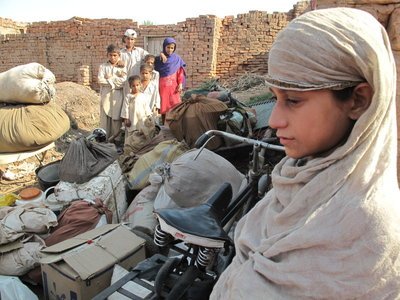Most of Jajarkot Dalit children deprived of education (The Himalayan Times (Kathmandu))
“Based on the findings of a three-month study that it conducted in the district from December-end, the NGO Dalit Women Empowerment Forum states that roughly 60 per cent of the district’s Dalit children — 8,000 of 13,300 — are deprived of education.
“Children from poor Dalit families make the most of the illiterate children.
“According to Gita Sunar, the forum chairperson, most of these children are from landless families. They have been working as khaliya and haliya (farm labourers) to make a living. The report states that 468 Dalit families of the district have been working as haliya and 126 families have been working as khaliya.”
See also:
NEPAL: The Haliya bonded labour slavery system must be abolished without further delay (Asian Legal Resource Centre, August 26, 2010):
“The Haliyas (literally, ‘one who tills land’) are enslaved within a system of bonded labour, and are forced by a landlord or ‘master’ to execute various hard labour duties (usually agricultural) for many years, often for an entire lifetime. Other than the agricultural work, Haliyas fulfil a range of duties, including making tools (such as spades, knives, and sickles) out of iron, grazing animals, sewing clothes, making utensils and pots, and so forth. The labourers are not paid a wage for their extensive work; often they are only provided with a small amount of food. Extreme poverty and debt in the western and far western regions of Nepal has relegated many members of the lower castes, known as Dalits, to Haliya status.
“Haliyas are forced to till a small patch of land in order to repay a debt, and are often held captive with their entire families. The enslaved Haliyas typically have no direct association with any debts; in the overwhelming majority of cases, the laborers are held because of debts accumulated by their ancestors over many generations. Such debts are often so excessive that a Haliya’s work over an entire lifetime will not generate sufficient revenue to even marginally reduce the interest incurred on the debts. [...]
“Despite being malnourished, Haliyas are expected to perform extraordinarily demanding labor duties. According to a custom known as Doli, they must carry exorbitantly heavy wooden carriages on their shoulders for hours at a time. Another custom (Khali) dictates that Haliyas are entitled to no fresh food at all–only leftover goods from the harvest. Despite working excessively long hours to fulfill grueling tasks, Haliyas typically receive only a bowl of white rice per day for their labor. [...]
“The overwhelming majority of Haliyas are Dalits. In fact, Nepal’s system of caste discrimination remains a direct factor leading to both the origins and continuation of the Haliya system.”
And see:
Policy spoke in Haliya rehab wheel: Ad hoc approach exacerbating their woes by Kamal Raj Sigdel (Kathmandu Post, April 25, 2010):
“Although the government outlawed Haliya practice on September 6, 2008, unsurprisingly most of them are still working for their landlords.
“‘When the Kamaiya system [of bonded labor in the Tarai region] was outlawed in 2000, it actually liberated the landlords, not the bonded labourers,’ says Laxman Kumar Hamal, member secretary of the Freed Kamaiya Rehabilitation Execution Committee at the Ministry of Land Reform (MoLR). ‘The same mistake has been repeated in the case of Haliyas.’
“For instance, the form that is being used to collect data on Haliyas does not require landlords to express commitment to help rehabilitate the tillers, which officials say is a serious oversight that will create problems in rehabilitation.”
